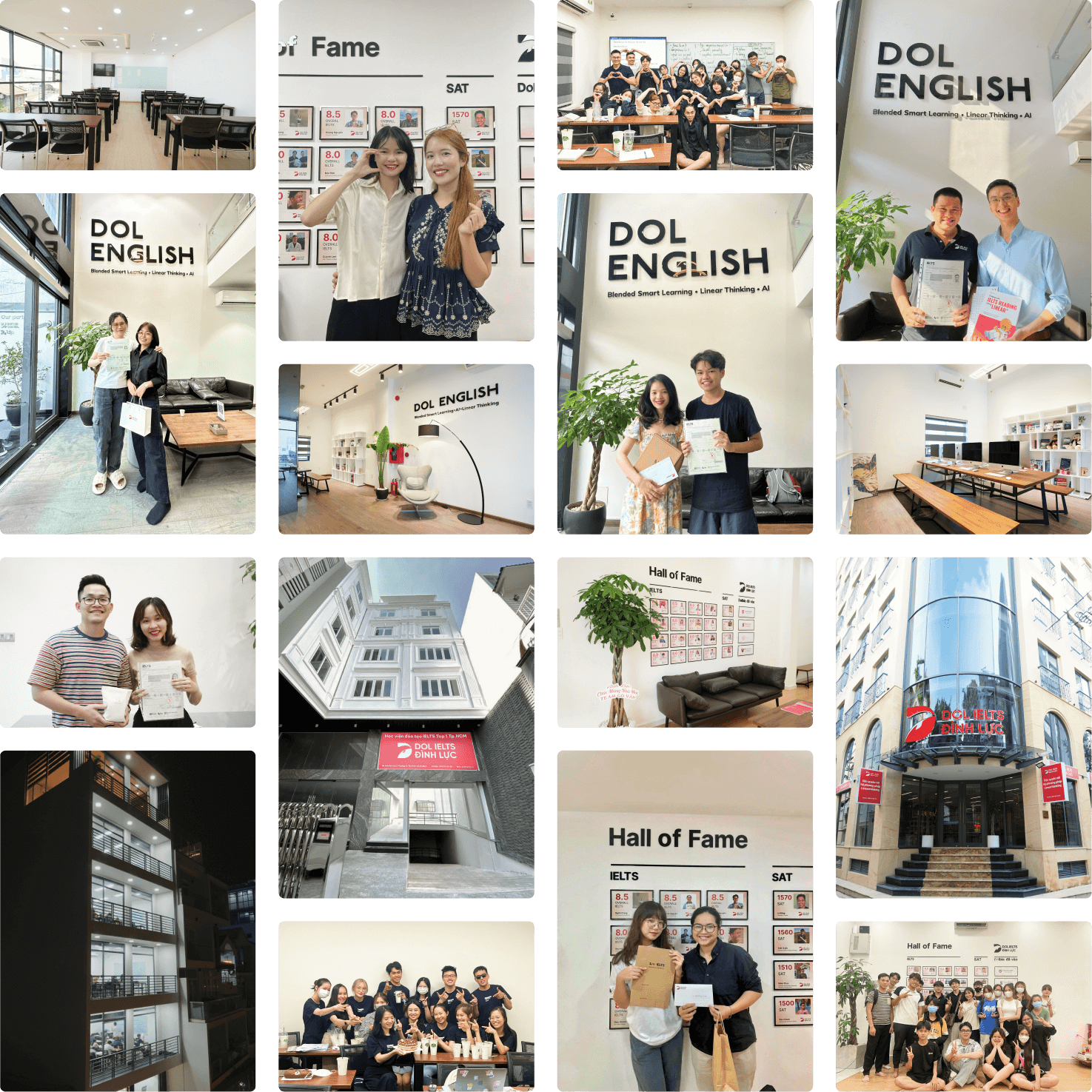The percentages of tourists who used different types of transport to travel within a particular nation
Đề thi IELTS Writing Task 1 ngày 16/12/2023 dạng Line Graph: The graph below shows the percentages of tourists who used different types of transport to travel within a particular nation between 1989 and 2009. Each tourist may have used more than one type of transport.
🚀 Đề bài

😵 Dàn ý
DOL sẽ miêu tả biểu đồ với 1 câu mở bài (Intro), 1 đoạn miêu tả tổng quát (Overview), và 2 đoạn thân bài miêu tả chi tiết (Detailed Description)
Mở bài: DOL sẽ paraphrase đề bài để giới thiệu lại đề bài cho người chấm.
Miêu tả tổng quát: DOL sẽ chỉ ra các đặc điểm quan trọng, nổi bật nhất trong biểu đồ.
Thân bài:
Body 1: DOL mô tả phần trăm số lượng khách du lịch sử dụng các loại phương tiện khác nhau năm 1989.
Body 2: DOL mô tả xu hướng đến năm 2009
- Cars: ~ half of the tourists (the most prevalent) >>> followed by airway and rail lines (40% and 35%).
- Coaches (10%) x2 ferries.
- Car: surged to over 60% in 1999, after dropped to over 50% (2009).
- Railways: a notable ascending trend (60%) -> the most commonplace (2009).
- Airplane: fell to 20% in 2009.
- Coach and ferry: recorded growths: the former (25%) >< the latter (just 10%).
📝 Bài mẫu
The given line graph illustrates how travelers commuted in a country over a 20-year period, starting from 1989. Five modes of transportation including car, rail, airplane, coach and ferry were surveyed with percent as the unit of measurement.
Overall, among all the methods of transportation, cars were the most popular during almost the entire surveyed period except the year 2009 when railway
At the start of the period, nearly half of tourists traveled around the country by car, establishing it as the most prevalent vehicle. This was followed by airway and rail lines, with their
Thereafter, the percentage of those traveling by car
(263 words)
📚 Vocabulary
✨ Bài tập Exercise
Mình cùng làm 2 bài tập sau đây để ôn lại các từ vựng và cấu trúc đã được dùng trong bài Sample IELTS Writing Task 1 nhé!
Exercise 1:
1 Trong thị trường cạnh tranh, công ty chúng tôi chiếm vị trí dẫn đầu nhờ các sản phẩm sáng tạo và chiến lược tiếp thị hiệu quả.
--> In the competitive market, our company
2 Trong năm qua, ngành công nghệ chứng kiến một xu hướng đi lên về doanh số và nhu cầu tiêu dùng.
--> Over the past year, the tech industry
3 Các thành viên trong nhóm được giao nhiệm vụ cụ thể dựa trên chuyên môn tương ứng của họ, đảm bảo rằng mỗi cá nhân đều đóng góp hiệu quả vào sự thành công của dự án.
--> The team members were assigned specific tasks based on their
4 Sau khi ra mắt sản phẩm, doanh số bán hàng tăng vọt lên mức chưa từng có, vượt quá sự mong đợi của chúng tôi.
--> After the product launch, sales
5 Sau thời kỳ suy thoái kinh tế, lợi nhuận giảm đáng kể, buộc phải đánh giá lại chiến lược.
--> Following the economic downturn, profits
Tiếp tục làm đề bài Writing task 2 ngày 16/12/2023 và từ vựng kèm theo!
Exercise 2:
Điền từ vào chỗ trống (dựa vào những gợi ý có sẳn)
có một xu hướng tăng trưởng đáng chú ý
vượt qua
giảm đáng kể
ghi nhận mức tăng trưởng
tăng đáng kể
có mức tăng trưởng khiêm tốn hơn
Tổng hợp đề hay tháng 12.2023 có bài mẫu tham khảo.
💡 Lời kết
Tới đây là hết rồi  Sau sample The graph below shows the percentages of tourists who used different types of transport to travel within a particular nation between 1989 and 2009. Each tourist may have used more than one type of transport, DOL mong các bạn không chỉ nắm được cách trả lời cho dạng bài Line graph, mà còn học được những từ vựng và cấu trúc hay để miêu tả các biểu đồ tương tự nhé.
Sau sample The graph below shows the percentages of tourists who used different types of transport to travel within a particular nation between 1989 and 2009. Each tourist may have used more than one type of transport, DOL mong các bạn không chỉ nắm được cách trả lời cho dạng bài Line graph, mà còn học được những từ vựng và cấu trúc hay để miêu tả các biểu đồ tương tự nhé.
1. Sử dụng mệnh đề danh từ (Noun clause)
Cấu trúc: that/where/what/whether/if,... + SV
Ví dụ: The given line graph illustrates how travelers commuted in a country over a 20-year period.
2. Sử dụng cấu trúc bị động của thì quá khứ đơn
Cấu trúc: S + was/were + V2/ed
Ví dụ: Five modes of transportation including car, rail, airplane, coach and ferry were surveyed with percent as the unit of measurement.
3. Sử dụng cấu trúc mệnh đề quan hệ rút gọn
Cấu trúc: S + V, which V -> S + V, V-ing
Ví dụ: nearly half of tourists traveled around the country by car, establishing it as the most prevalent vehicle.
4. Sử dụng đa dạng các transition tools
- Dùng công cụ preferencing "this".
Ví dụ: Nearly half of tourists traveled around the country by car, establishing it as the most prevalent vehicle. This was followed by airway and rail lines
- Meanwhile: trong khi đó -> dùng để mô tả 2 số liệu ở cùng một thời điểm.
- Thereafter: sau đó -> dùng khi bạn đưa ra số liệu ở những năm tiếp theo.
- Opposite changes can be seen in + N: những thay đổi ngược lại có thể được thấy ở -> dùng khi muốn đưa ra những xu hướng trái ngược với những xu hướng bạn đã đề cập trước đó.
Nếu có thời gian thì nhớ làm phần bài tập và tự mình viết một bài khác nha vì 'Practice makes perfect' mà nhỉ? DOL chúc các bạn học tốt! 



